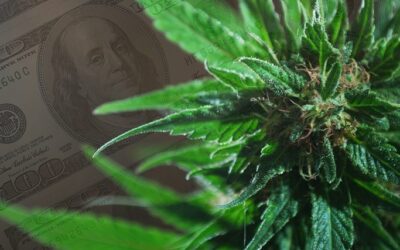New data indicates that the risk of dependence forming in those who use marijuana heavily has declined since 2002.
Rates of marijuana dependency are dropping in those who use cannabis frequently, according to a new study published in Drug and Alcohol Dependence.
Study author Steven Davenport, an assistant policy research at RAND Pardee Graduate School, used data from the National Survey on Drug Use and Health to calculate rates of dependence among individuals who use cannabis on a daily or near-daily basis.
Davenport discovered that from 2002 to 2016 the number of “heavy marijuana users” who met criteria for cannabis use disorder (CUD) dropped from 26.5 percent to 16.1 percent, a decline of more than 39 percent.
For a person to be considered as having CUD, they had to experience at least three of the six criteria defined by the Diagnostic and Statistical Manual of Mental Disorders IV. These criteria included:
- Spending a large amount of time over a month obtaining or consuming marijuana, or recovering from marijuana’s effects.
- Having the inability to keep self-set limits on the amount consumed or the frequency of cannabis use.
- Finding that consuming more marijuana was needed to acquire desired effects or that consuming the same amount had lesser effects.
- Having the inability to reduce or stop marijuana consumption when desired.
- Continuing to heavily use marijuana despite experiencing emotional, neural, mental health, or physical health problems.
- Reducing or having stopped participating in important activities because of using marijuana.
Davenport admits that he was surprised by his studies findings. He had expected that the rates of CUD would have increased as a result of the growing prevalence of adult marijuana use nationwide.
The drop in CUD rates among heavy cannabis consumers held up true for every demographic, except for those aged 50 years and older.

Why Has Dependency Dropped?
The study’s findings could suggest that legalizing marijuana has had a positive impact on rates of clinical cannabis dependency. Between 2002 and 2016, 22 states passed legislation legalizing the use of marijuana for medical purposes, and eight states legalized recreational marijuana.
“What may be driving these trends is not entirely clear,” wrote Davenport. “The truth lies between two alternative extreme interpretations.”
Davenport suggested several potential causes for the drop in rates of CUD.
First, he believes that it’s possible that the expanding marijuana legalization that has played a role in the trend. With greater legal access, consumers spend less time seeking out product. Legalization has also resulted in more health-conscious cannabis alternatives to smoking, such as edibles and vaping materials. Additionally, the destigmatization of cannabis may have encouraged consumers to still value their personal and professional commitments.
The change may also simply be related to heavy users being less inclined to detect dependency problems and to report them, he said. He went on to urge for more investigation into the real answer.
“[T]he issue merits further research studying how different state marijuana policies or the use of different marijuana products may affect risks of dependence and other health harms,” Davenport concluded.
“Policy stakes are high, including not only whether marijuana legalization continues to spread to more jurisdictions, but also how harmful aspects of marijuana are perceived and managed within legalized environments.”
More Cannabis Research
Davenport’s study, “Falling rates of marijuana dependence among heavy users,” is available to access through Science Direct.
Learn more about the findings of previous cannabis studies through our education page, and keep up with research as it’s published by regularly visiting our news page.






